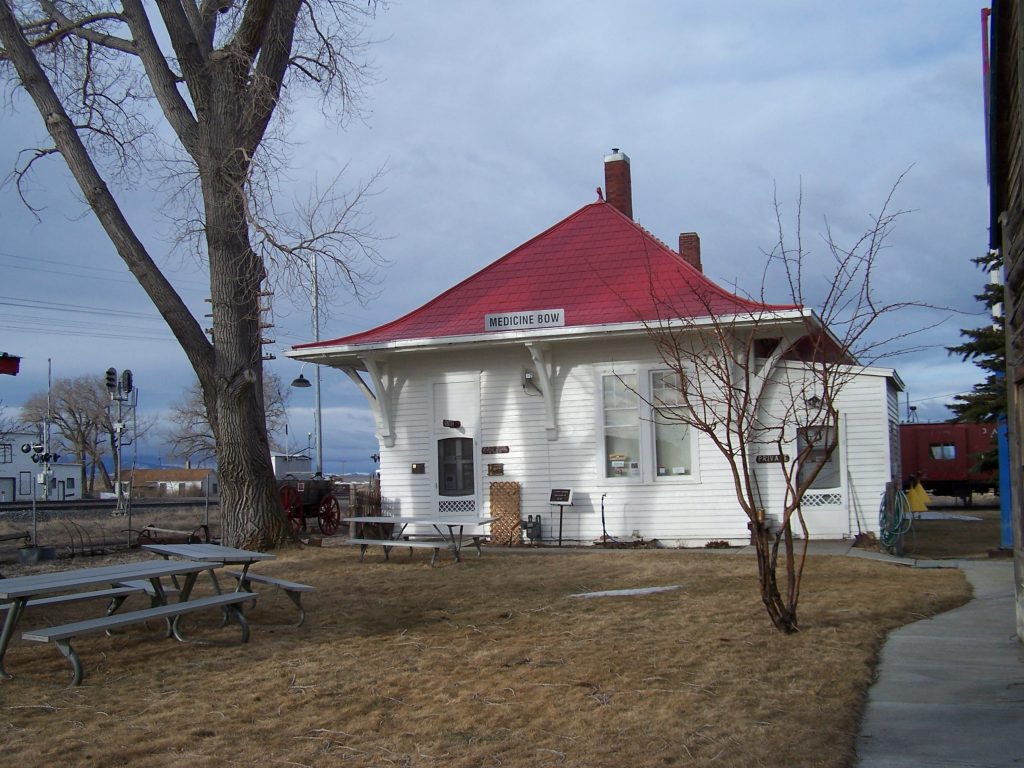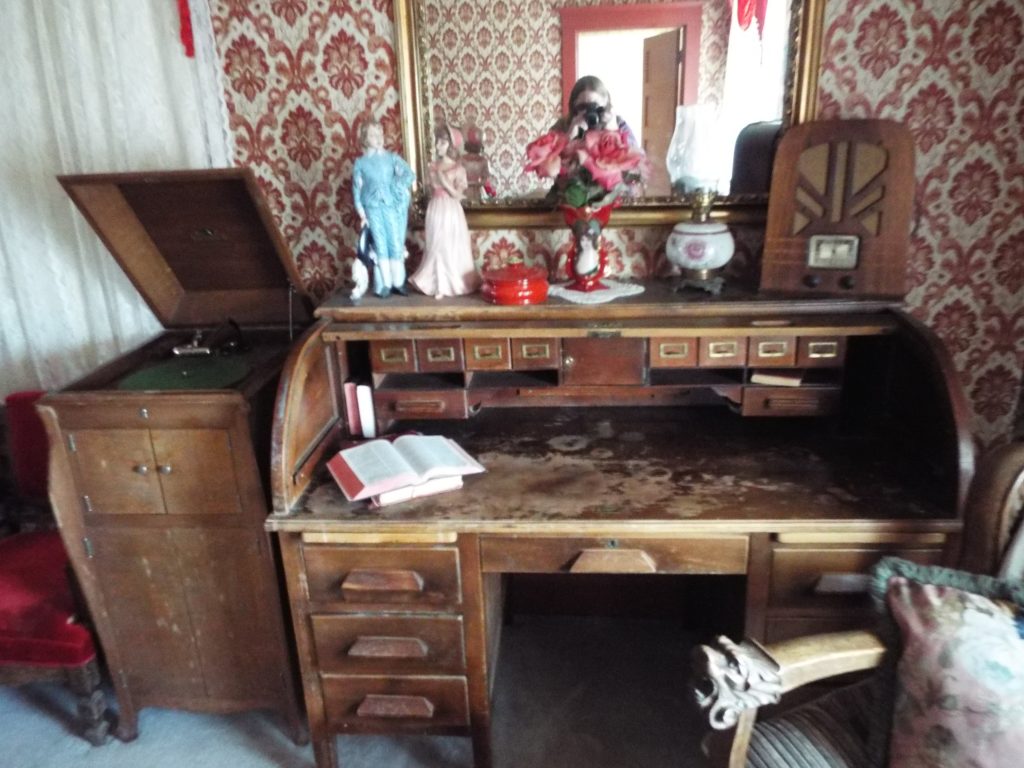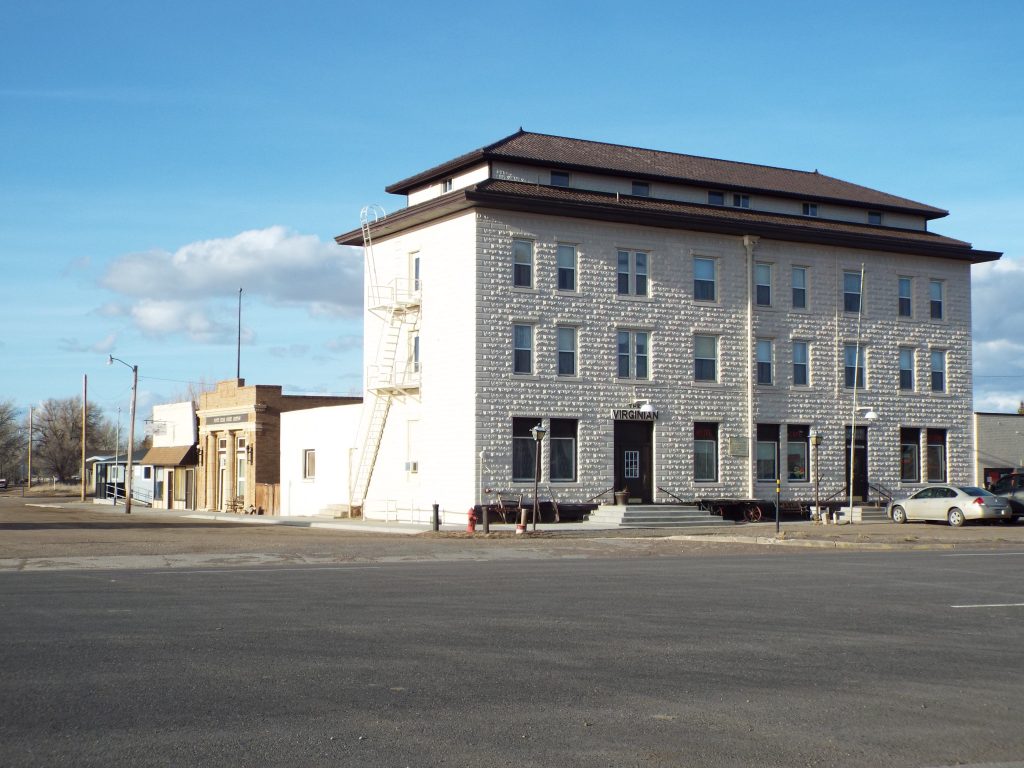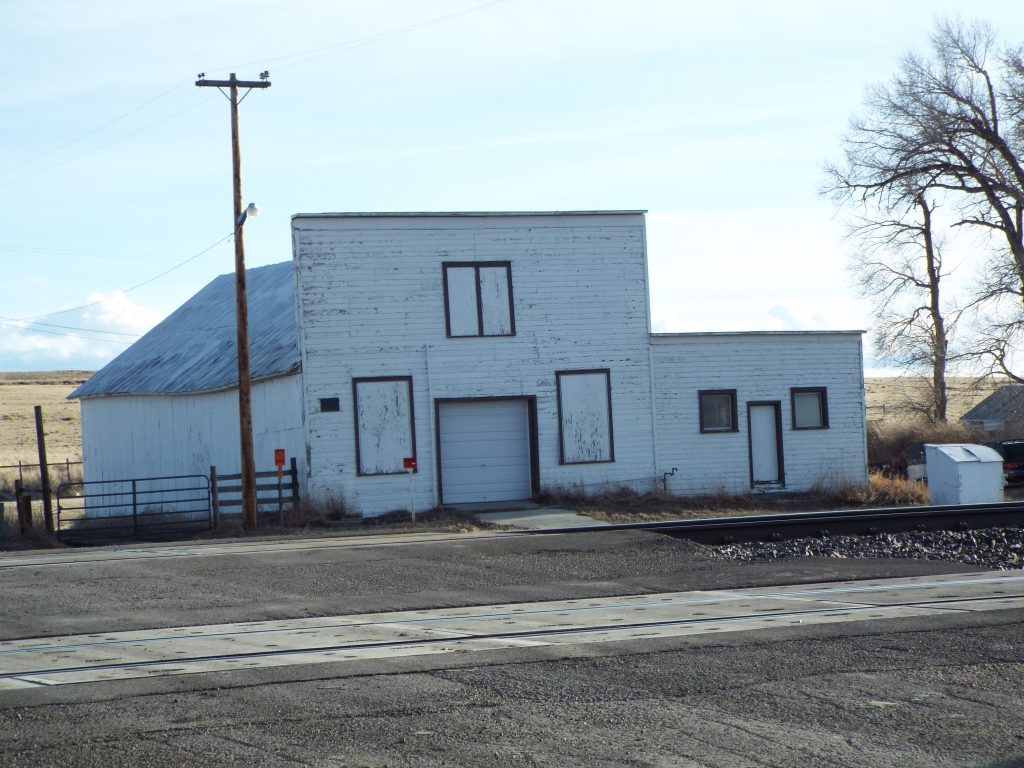News
In 1904, Wyoming Comes to Broadway

The Occidental Hotel, Buffalo, Wyoming, where The Virginian got his man.
In January of 1904, a new stage play opened on Broadway in New York. In the Guernsey Gazette. Guernsey Wyoming, in May, 1905, there is this blurb …The play entitled “The Virginian,” presented last week to crowded houses at the Broadway theater, with its scene laid in Wyoming and a half dozen cowboys the center of action.
Broadway is a long way from Sheridan, Wyoming, and one might wonder why a play on Broadway would be featured in a Wyoming newspaper.
But, in this case, the action takes place in Wyoming, some of it in Buffalo. The play was based on the book, The Virginian A Horseman of the Plains, written in 1902 by eastern writer, Owen Wister. The Virginian is considered to be the first Western novel, about a black-haired cowboy, his love for the transplanted Vermont school teacher and his search for justice during the early days of Wyoming.
Wister spent many summers in Wyoming, hoping it would improve his health. In 1885, due to the recommendation of his friend and former classmate, Teddy Roosevelt, he stayed on the VR ranch near Casper, Wyoming. In 1885, Wyoming was still a territory, and it was just before the Johnson County Range War.

During Wister’s travels, on the train, in stagecoaches and on horseback, he discovered a range of characters and events that later became a part of his most famous novel, The Virginian, and many short stories. While awaiting a train in Medicine Bow, the town Wister used as a background for much of the novel, Wister spends the night on a counter in the mercantile. This incident is reflected by his narrator in The Virginian, who also spends an uncomfortable night on the counter of the saloon. (The Virginian, by a little deception, finds a real bed for himself.)
The Virginian is set against the backdrop of the tensions that caused the Johnson County War. When Wister was looking for material for his books, he traveled to Buffalo and Kaycee, Wyoming, the main areas of the Johnson County War. Although the characters are fictitious, many are based on real people that Wister knew.
In the novel, The Virginian (he has no other name), travels from Medicine Bow, Wyoming, to Buffalo, chasing the rustler, Trampas. He catches up with him at the Occidental Hotel. It was here that Wister set his final chapter of his book, where The Virginian, even though he knew that the shooting of the rustler Trampas might end his hopes of marrying Mary Stark, knew that justice had to be served, and he dealt it out with lead.

Everyone wonders where authors get the characters in their novels. Here is an explanation in an article from the Cheyenne Daily Leader in December, 1905 it tells about a possible model for The Virginian.
Jennings is The Virginian says so himself in a story given to the Denver Post. Ex-Prosecuting Attorney of Carbon County Springs Into Sudden Notoriety.The friends of H. Jennings, ex-county clerk of Carbon County, will be somewhat astonished to learn that he is, in part, the original of “The Virginian.” They had not here to fore suspected that fact, but Mr. Jennings says that such is the case, as is shown, by the following clipping from the Denver Post: the article quotes from the book, ‘lt was now The Virginian’s turn to bet or leave the game, and he did not speak at once. Therefore Trampas spoke: ” ‘Your bet. you — — “”‘ ” ‘The Virginians pistol came out and his hand lay on the table, ‘”When you say that, Smile.’ ”THE VIRGINIAN.”
‘When you say that, smile.’ “The man whose tongue lisped out those fateful words— which carried in each syllable the toll of death is today a Denver visitor. “He is Harry Jennings, deputy United States Marshal of Rawlins, Wyo. He is here on official business, which always carries its cloak of secrecy. “The armor of modesty which invariably protects the one of true nerve was penetrated sufficiently last night for Mr. Jennings to allow the following to leak out.:.”‘I know Mr. Wister very well and helped him in a way in getting the information on which his great novel was founded. I was not an officer at that time, and when we hit Medicine Bow, I butted into a poker game. There was a fellow in the game that I did not like–In fact, we had before that mixed up. During the game I suppose I was little slow, and he applied the term which Mr. Wister quotes. I had so often heard it from friends, that for a moment I did not realize the difference when coming from the lips of an enemy. Then of a sudden I did, I threw my gun on him and used the expression, ‘When you say that, smile.’
“I had no idea at the time that Mr. Wister would use rumpus in a poker joint for a chapter in his story. He has done it, and my friends, have kidded me a great deal about it.”
Mr. Jennings says that, while many of the characters in ‘The Virginian” are drawn from present residents of Wyoming, that ‘The Virginian’ is a composition production of a number of cow punchers’ characteristics and other characters met by Mr. Wister during his Wyoming sojourn.”

In the Grand Encampment Herald, Grand Encampment, Wyoming, February 1904 an article talks about the Virginian: Prof Sloason, of the university is now in New York, and tells the following about some of Wister’s characters in “The Virginian.” Much of Wister’s material comes from Dr. Amos W Barber of Cheyenne, formerly governor of Wyoming, and one of the best story tellers in a country where good story tellers are scarce. He appears in several of Wister’s tales as Dr. Amery W. Barker.
The itinerant preacher who wrestled all night with the Virginia when he was in a state of sin is easily recognized by anyone familiar with Wyoming life. All of the old settlers will tell who the Virginian was but the curious thing about it is that they all point out different men as the of the character. The fact his adventures once belonged to various men from Montana to Southern California. The ranch of which the Virginian was foreman is Cod Torreys in the heart of Wyoming known on the map as Embar.
From there the location of the Bowleg range (Awl Creek range.) (However, in a letter to Johnson County Historian Lott, Wister said that ‘Bow-Legged Mountains’ in the book were based on the Big Horn Mountains, and the town described sounds like early day Buffalo.) Sunk creek and other historic sites is easy. The changing of the babies is a true story and occurred on the Goose Egg Ranch, now belonging to Judge Carey, at the junction of the Poison Spider and the Platte, in 1887 or 1888.
Molly Wood is a type. There are many of her in Wyoming. Whenever there are two or three children, even on a single isolated ranch, there a school teacher is sent for part of the year at the cost of 540 to $50 a month, a very considerable proportion came as “very sincere spinsters,” but have been induced, like Molly Stark Wood, to transfer their affections to others than their pupils.

In Wister’s journals about his travels in Wyoming, he mentions many predominate ranchers and businessmen in the Casper and Buffalo area and undoubtedly drew on them to build some of his characters.
In The Buffalo Voice, on February, 1917, there is this article about Wister’s time in Buffalo. Here is an excerpt: …When Mr. Wister visited the country of The Virginian, as now, Buffalo was the only town “in the splendor of Wyoming space.” which is Johnson County. Then it was an “inland town” far off the railroad; now a single track is tardily creeping toward this last outpost of the old frontier— may even be bringing its engine hoot to Main Street before this is published. ….. until the railroad brought a boom to Sheridan forty-odd miles to the northward, Buffalo was the largest and liveliest town in Northern Wyoming. There the freight wagons from a hundred miles south distributed their supplies for the great cattle outfits which ranged from Powder to Yellowstone and there during the winter season hundreds of cowpunchers, idle and bursting with raw spirits, played the game of life Mr. Wister has pictured for us.
Giving Buffalo no alias, this is the town The Virginian’s creator saw and knew even though at the time of his visits the rawness was wearing from it…. Main Street had many smaller punctuation marks; the creature joys — the Cowboy Saloon, the Fashion and the Capitol: but the heaviest exclamation point of all was the Occidental hotel. It still stands though neat brick walls have supplanted its log- and- clapboard facade, where Clear Creek brawls under the Main Street bridge. Here, legend has it, Owen Wister met and chummed with Henry Smith, a popular though deservedly notorious horse thief, since passed over. (Mr) Quick, the Occidental’s present host, even will show pilgrims the spot under the big silver poplar by the stream’s side where the Western bad man and the Eastern tale writer used to sit and yarn. It was the Occidental Wister selected as background for his story’s swift climax. Thither The Virginian brought Molly Wood from Bear Creek schoolhouse, and it was alone in her room there the Vermont girl heard the three shots which signalized the working out of a man’s code beyond even her love to sway or alter.
Modern Buffalo – the town with the prim electric lights and the cement sidewalks and the hoot of the engine whistle at its borders— displays a photographic reprint of the old log Occidental. “Where the Virginian Got His Man ‘ is the legend across the bottom.
The Occidental was built in 1880, it has been refurbished it in that period, with authentic rooms that have all the modern amenities. The Virginian Restaurant serves fine food and walking into the saloon is like stepping back in time. It is listed on the National Registry of Historic Places.

The stage play, the Virginian, written in 1904 in a collaborated effort between Wister and Kirke La Shelle, featured Dustin Farnum as The Virginian. Ten years later, Farnum reprised the role in a Cecil B. DeMille’s film adaptation. Since then, there have been three other films and a television series that still runs today on some channels.
Wyoming came to Broadway 117 years ago this month, the “black-haired cowboy” The Virginian, fought rustlers and fell in love in front of packed houses on Broadway and across the country. And he got his man in Buffalo, Wyoming.

